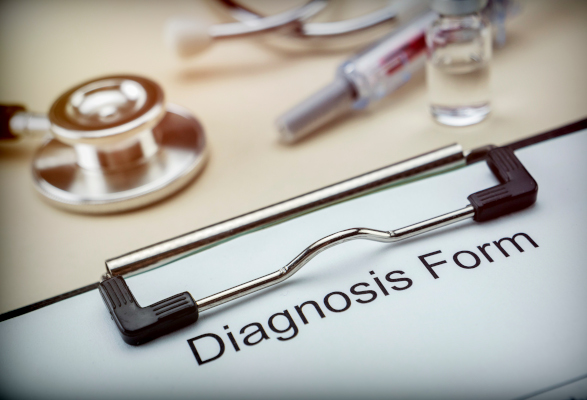Here are the highlights from the upcoming fiscal year 2019 edition (effective October 1st, 2018)
- Additions (320)
- Together, the eye received the largest proportion (almost a third) of new codes
- Chapter 2: Neoplasms (C00-D49) added codes to specify upper or lower eyelid on each side – previously the code would end at left or right eyelid
- In contrast to the above, in Chapter 7: Diseases of the eye and adnexa (H00-H59), codes are added for upper and lower eyelids on each side
- New diseases - paralytic ectropion, Meibomian gland dysfunction, rosacea conjunctivitis and brow ptosis – are also added to chapter 7
- Next largest portion (almost a quarter) of new codes is for Chapter 19: Injury, poisoning and certain other consequences of external causes (S00-T88)
- Poisoning by Ecstasy
- Infection and Sepsis following a procedure
- Forced labor or sexual exploitation of child or adult, confirmed or suspected
- Chapter 15: Pregnancy, childbirth and the puerperium (O00-O9A), Chapter 16: Certain conditions originating in the perinatal period (P00-P96), and Chapter 17: Congenital malformations, deformations and chromosomal abnormalities (Q00-Q99) received a fair amount of additions as well
- Additional specifications for triplet, quadruplet and other multiple gestations
- Infection of obstetric wound
- Newborn affected by maternal use of drugs or substances, and other conditions
- Transitory electrolyte disturbances of newborn and chromosomal abnormalities
- There is now a new code for congenital zika virus disease P35.4
- Related to pregnancy, you can now report two highly anticipated new codes in Chapter 5: Mental, Behavioral and Neurodevelopmental disorders (F01-F99)
- Postpartum depression F53.0
- Puerperal psychosis F53.1
- Other additions in chapter 5 are related to withdrawal in Cannabis related disorders and a new factitious disorder code
- Other additions are spread over the following chapter
- Chapter 4: Endocrine, nutritional and metabolic diseases (E00-E89) added codes for elevated lipoprotein, other hyperlipidemia, and other problems
- Chapter 6: Diseases of the nervous system (G00-G99) added site specific codes to clonic hemifacial spasm and disease specific codes to muscular dystrophy
- Chapter 9: Diseases of the circulatory system (I00-I99) added codes for hereditary cerebrovascular diseases and cerebral infarction due to occlusion or stenosis of small artery
- Chapter 11: Diseases of the digestive system (K00-K95) added codes specifying different types of peritonitis, with or without abscess, perforation or gangrene, to acute appendicitis codes; new types of abscess of anal and rectal regions; and new gallbladder and cholangitis disorders
- Chapter 13: Diseases of the musculoskeletal system and connective tissue (M00-M99) added site specific codes to myalgia
- Chapter 14: Diseases of the genitourinary system (N00-N99) added multiple specifications to urethral strictur
- Chapter 18: Symptoms, signs and abnormal clinical and laboratory findings, not elsewhere classified (R00-R99) added abnormal findings in urine and abnormal radiologic findings for testis
- In conjunction with this year’s additions for disorders, new codes are added to the section Persons encountering health services for examinations (Z00-Z13)
- Encounter for examination and observation of victim following forced sexual or labor exploitation
- New screening codes for mental/behavioral disorders and developmental delays
- A new code Z20.821 for contact with and (suspected) exposure to Zika virus
- Family history of elevated lipoprotein, lipidemia and other disorders of lipoprotein metabolism
- Lastly, a new code Y07.6 is provided for multiple perpetrators of maltreatment and neglect
- Together, the eye received the largest proportion (almost a third) of new codes
- Deletions (3)
- The codes for infection following a procedure have been replaced by renumbered new codes with the addition of “unspecified” to the code description
- T81.4XXA → T81.40XA Infection following a procedure, unspecified, initial encounter
- T81.4XXD → T81.40XD Infection following a procedure, unspecified, subsequent encounter
- T81.4XXS → T81.40XS Infection following a procedure, unspecified, sequela
- The codes for infection following a procedure have been replaced by renumbered new codes with the addition of “unspecified” to the code description
- Existing codes with revised descriptions (110)
- The bulk of the correction is for the codes under S62 Fracture at wrist and hand level – “medial” phalanx is corrected to “middle” phalanx
The 2019 ICD-10-CM consists of 21 chapters with 71,932 fully-specified codes. The updates have an impact to the NLM SNOMED CT to ICD-10-CM Map as well. Both terminologies and the map set are included in the 3M HDD. We have also enhanced the NLM provided mappings. Please contact us if you have questions or if you’d like us to help with implementing terminologies, map sets and value sets!

